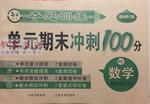题目内容
— Terribly sorry, but I thought this was a parking lot.
— ______. Here is your ticket.
A. That’s all right B. Never mind
C. Don’t mention it D. Sorry, that is no excuse
D.
【解析】
试题分析:考查情景交际短语。 A沒有关系;B:不要紧;C不要提及;D抱歉,請不要找借口,理由。句意:真的非常抱歉,但是我以为这是一個停车场。很抱歉,请不要找理由,这是您的罚单。故选D。
考点:考查情景交际对话中的固定搭配。

练习册系列答案
 夺冠训练单元期末冲刺100分系列答案
夺冠训练单元期末冲刺100分系列答案 新思维小冠军100分作业本系列答案
新思维小冠军100分作业本系列答案 名师指导一卷通系列答案
名师指导一卷通系列答案
相关题目